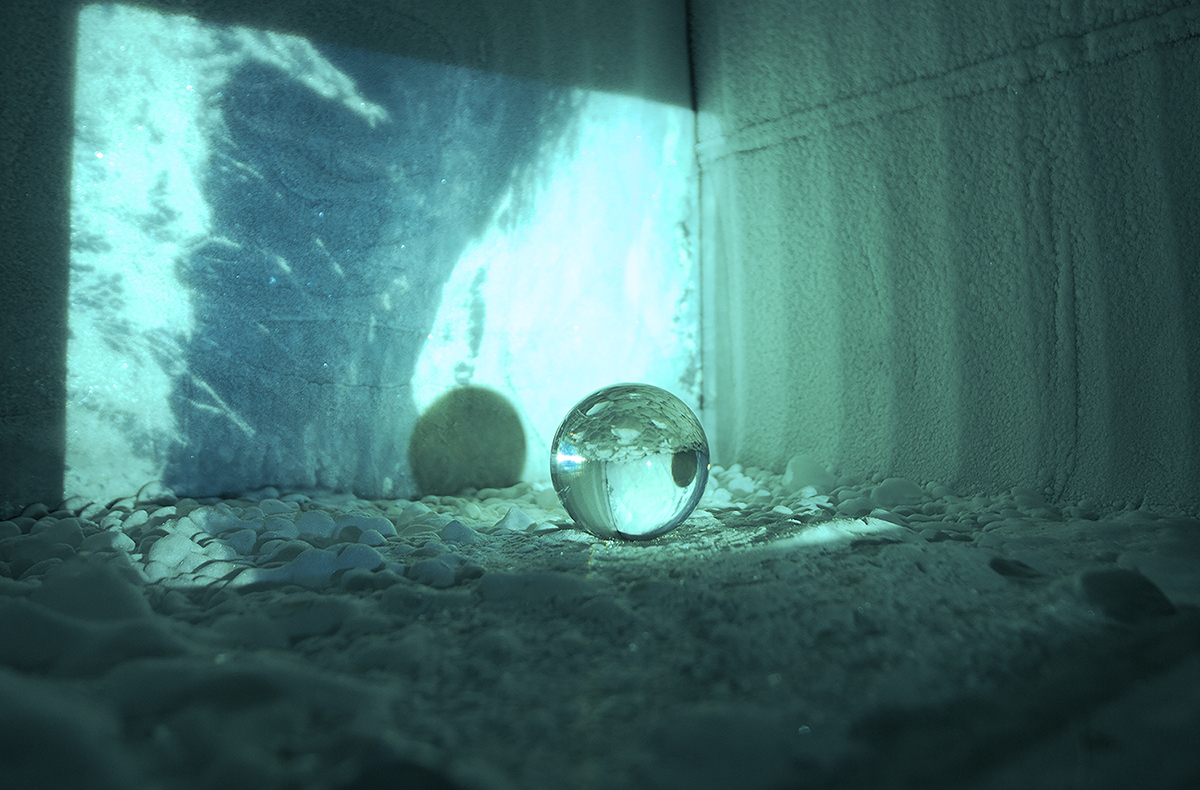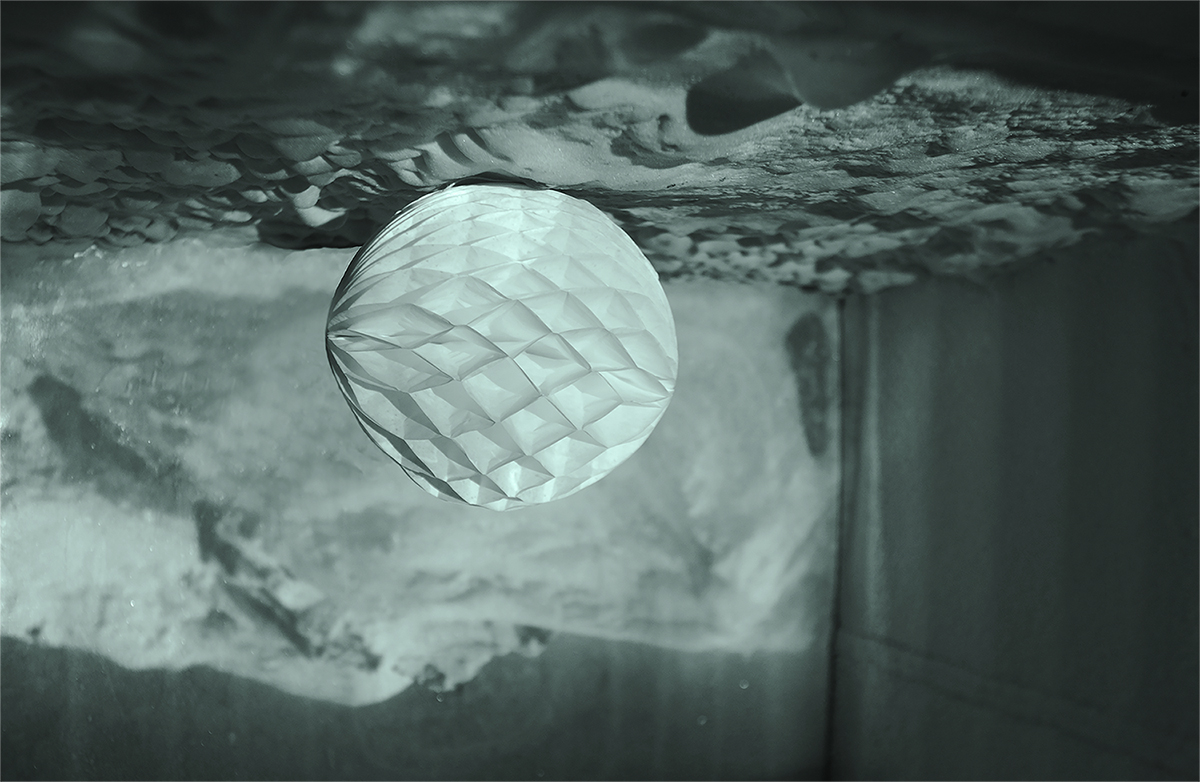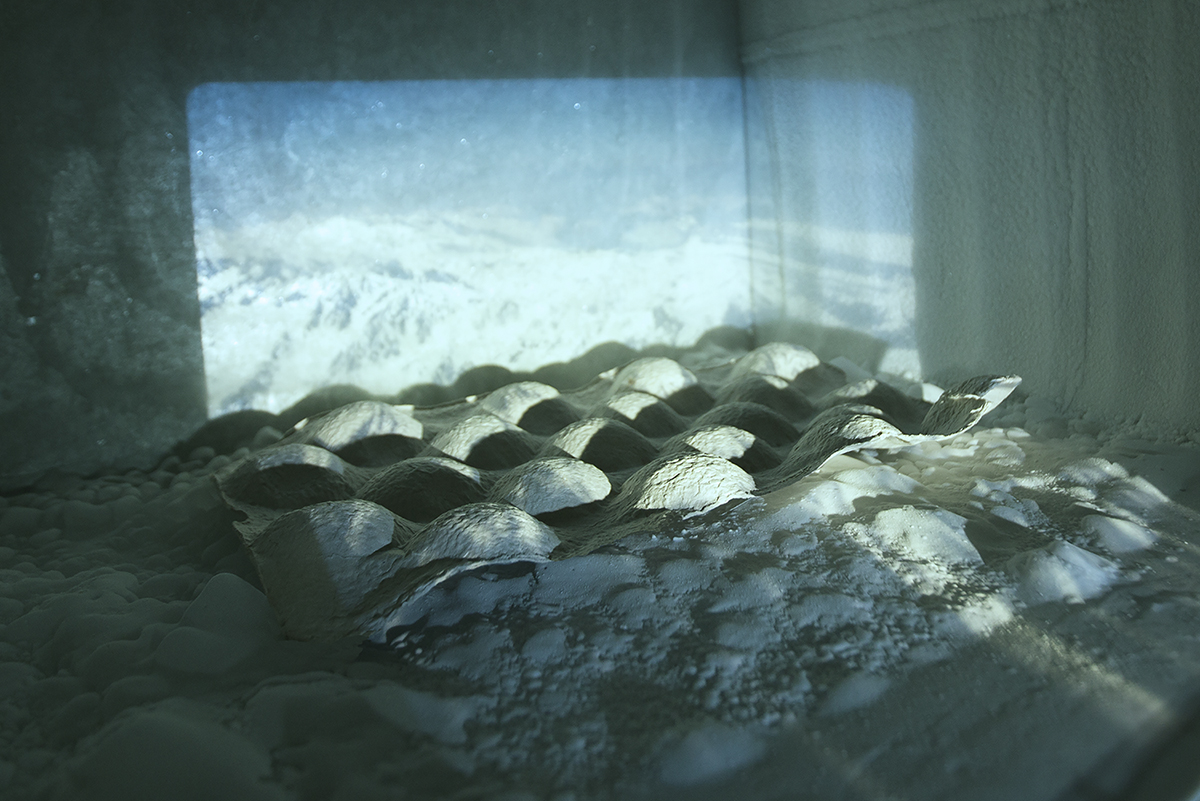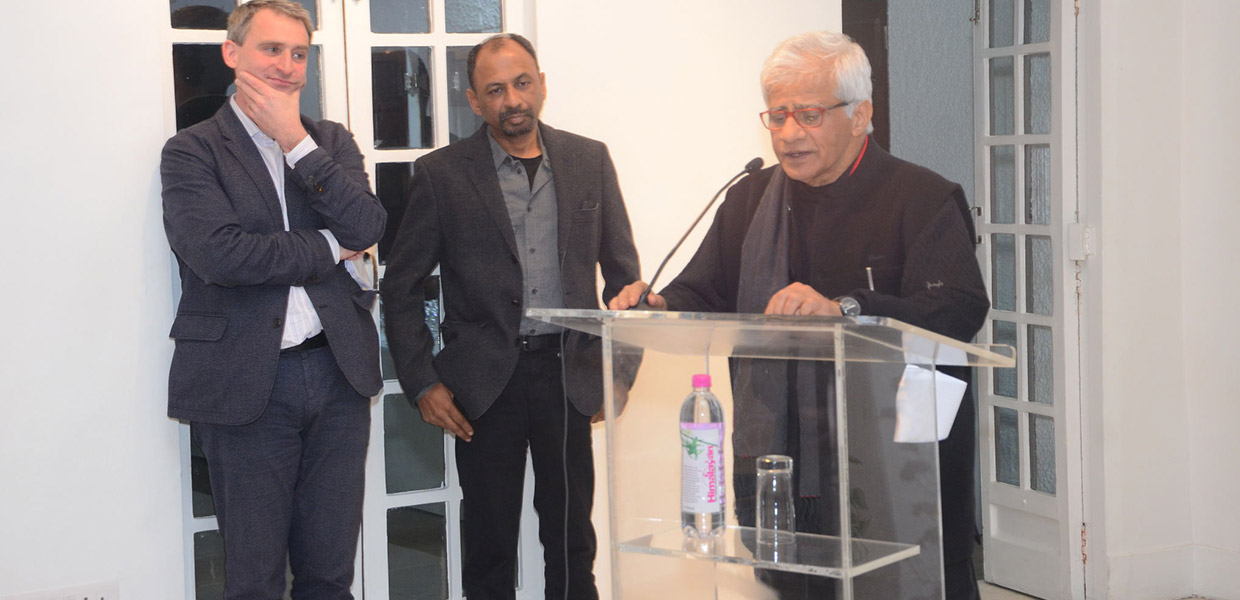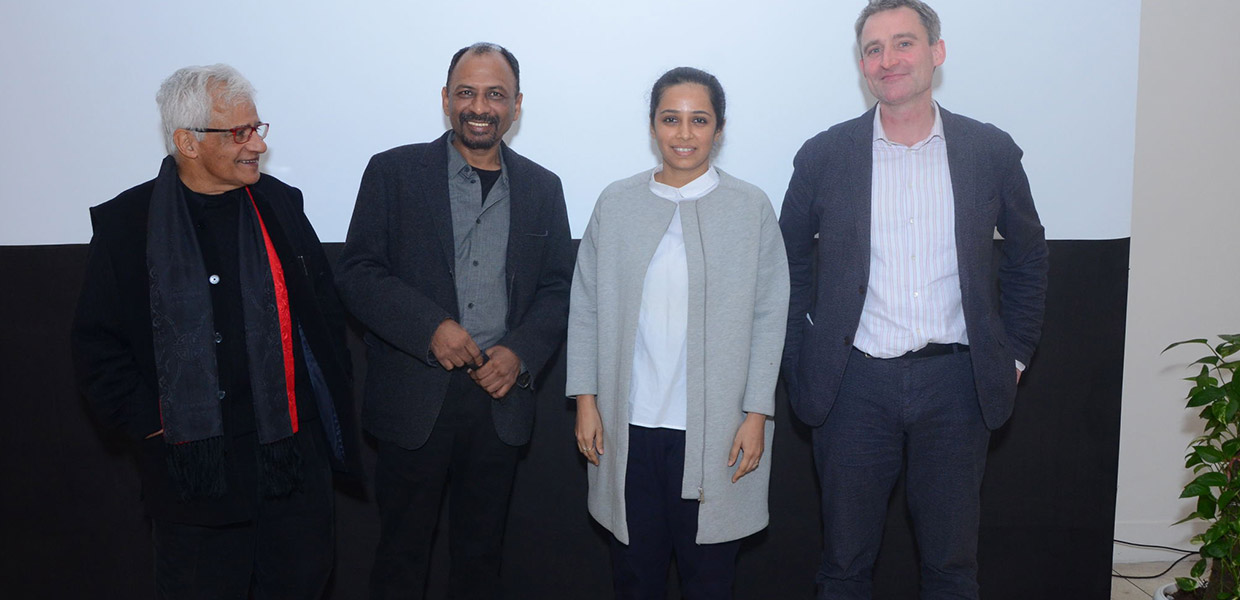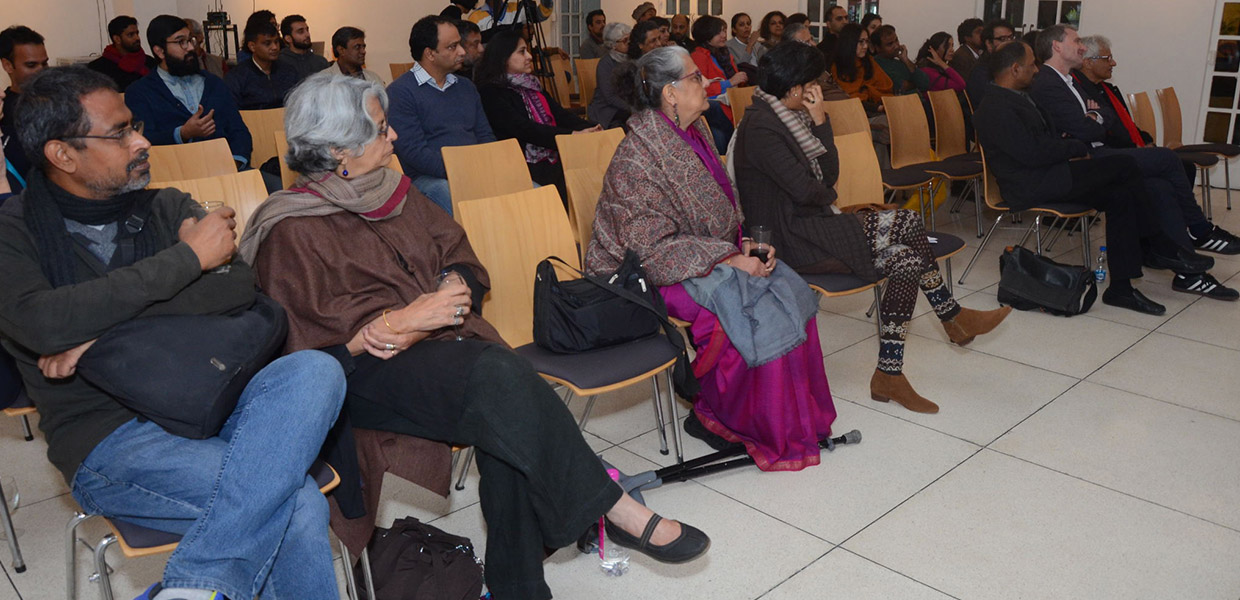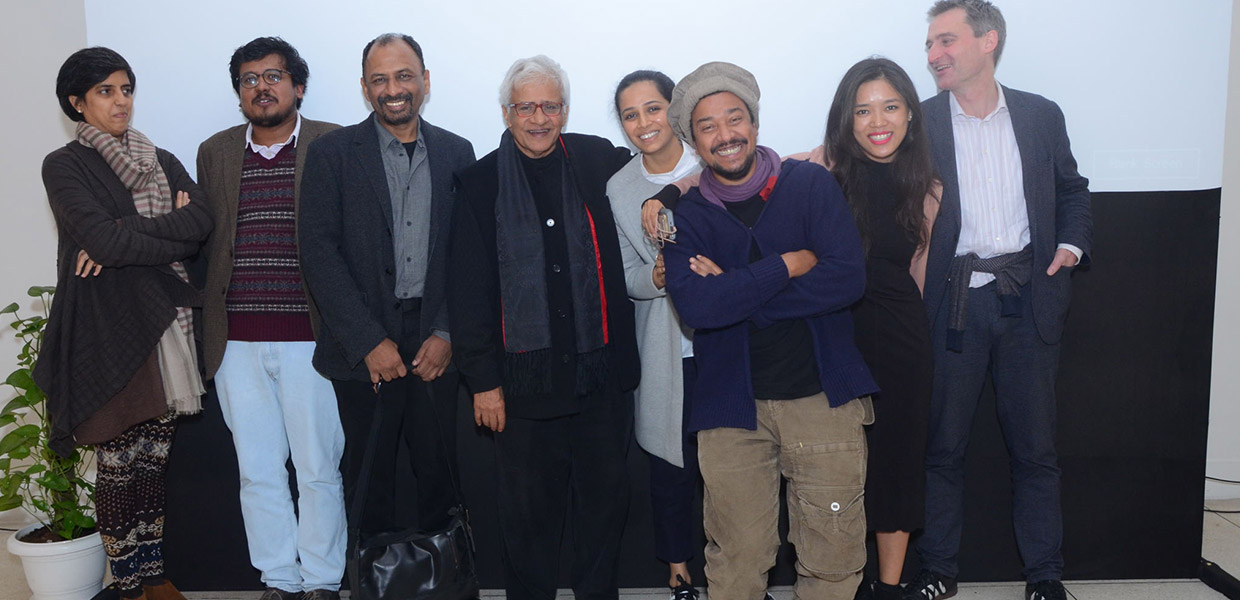Grant Recipient
PRAJAKTA POTNIS
Title of the Project
WHEN THE WIND BLOWS
Artist Statement
For a while now, I have been working on a series of photographs where the frozen still image is essentially a residue of an extensive process of meticulous constructions. An apparatus that consists of found to sculpted objects, along with props that are carefully constructed and installed within the cavities of everyday domestic appliances, miniature lights strategically placed to finally capture the still frame that translates as a documentary evidence of an event or a happening.
The momentary nature of this installation creates the possibilities of working with various perishable and unpredictable materials. Through these photographic works my endeavour was to capture the transient staged moment of becoming.
Insulated interiors of a washing machine and sterile visceras of a refrigerator have intrigued me. The temperature-controlled environment within a refrigerator with its ethereal light resonates with the abandoned set of a sci-fi film.
In the ongoing series, When the wind blows, 2016, installations are staged in the freezer of an outdated refrigerator that deposits thick layers of ice in its compartment – a phenomenon less visible in the modern frost-free refrigerators.
The frost from the freezer simulates a snow-clad deserted landscape or the terrain of an unknown planet. Timothy Morton’s Hyperobjects: Philosophy and Ecology after the End of the World initiated the site. With the melting of glaciers to the seed vault in Norway, the freezer seemed like an appropriate space to reiterate the dialogue around climate change through the realm of the domestic – the private.
I intend to explore the possibilities of shooting within the environment of the freezer, building complex settings that translate into psychological topographies. Since the space is extremely unpliable, I intend to build freezers that will be more accessible. This will enable me to move more freely while I look for different vantage-points to shoot the mise-en-scène. Since site and scale are crucial aspects to my process, I build most of my equipment from a makeshift dolly to making my own lighting circuit; everything is tailored as per the requirement of the moment.
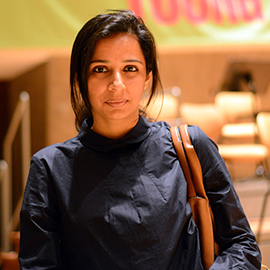
Prajakta Potnis’s practice ranges from painting, site-specific sculptural installations to public art interventions. She has shown her works extensively since 2001, both nationally and internationally.
To name a few of her group exhibitions:
In 2017 she participated in a couple of group exhibitions in Mumbai and Delhi.
In 2016 she was invited to participate at the 11th Gwangju Biennale, curated by Maria Lind.
In 2015 at the Queens Museum, New York, her work was exhibited in a show of modern and contemporary artists titled ‘After Midnight: Indian modernism to contemporary India, 1947/1997’, curated by Arshiya Lokhandwala. Earlier that year she showed a site-specific wall installation at the Kunsthaus Langenthal, Langenthal.
In 2014 she was invited to participate in the Kochi-Muziris Biennale, curated by Jitish Kallat. Earlier that year her work was part of a show curated by Geeta Kapur titled Aesthetic Bind: Cabinet Closet Wunderkammer, at Chemould Prescott Road, Mumbai. The same year she participated in ‘Textile Languages’ at the Thalie Art Foundation, Brussels; showed at Kadist Art Foundation, Paris; Clark House Initiative, Mumbai invited her to create a site-specific immersive installation; and Girish Shahane included her work in the Chennai Art Festival.
In 2013, as an Artist Dispatch Project, her work was part of the exhibition ‘Shamans and Dissent’ at Hanart Tz Gallery, Hong Kong.
In 2011, her works were part of a travelling exhibition titled ‘Indian highway IV’, Mac Lyon Museum of Contemporary Art, Lyon, France.
In 2010 she showed at ‘Indian highway III’, Herning Museum of Contemporary Art, Denmark, and ‘Indian highway II’, Astrup Fearnley Museum, Norway.
Her solo projects have been:
2016: When the wind blows, Project 88, Mumbai
2014: The Kitchen Debate, Künstlerhaus Bethanien, Berlin
2012: Time Lapse at The Guild, Mumbai and Local Time at Experimenter, Kolkata
2008: Porous walls at The Guild, Mumbai; Membranes and Margins at Em gallery, South Korea.
2006: Walls in between, The Guild, Mumbai.
Prajakta has been featured in significant publications like I’m Not There: New Art from Asia (2010), edited by Cecilia Alemani, published by The Gwangju Biennale Foundation. In 2009, she was featured in Younger than Jesus: the artist directory, co-published by the New Museum and Phaidon.
In 2010, she was awarded the Sanskriti Award for art.
Jury
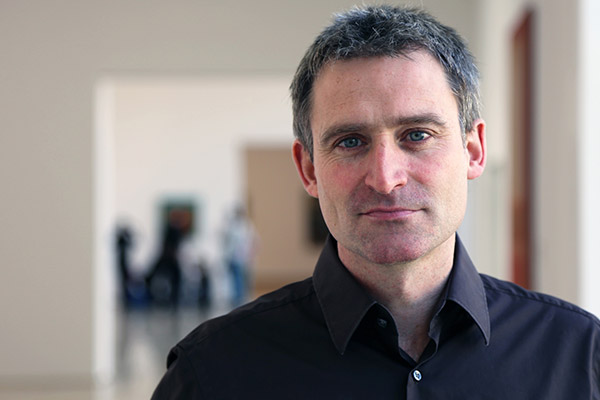
Florian Ebner (b. 1970, Regensburg/Germany) has been head of the Photographic Collection at the Museum Folkwang, Essen, since the end of 2012. In 2015 he was curator of the German Pavilion at the Venice Biennial. From 2009 to 2012, he was director of the Museum für Photographie Braunschweig, and in 2008/09, he was in charge of the Photographic Collection at the Berlinische Galerie. Prior to that, he taught photography at the Academy of Visual Arts Leipzig, in Timm Rautert’s class amongst others. He has produced numerous exhibitions and publications on modernist and contemporary photography.
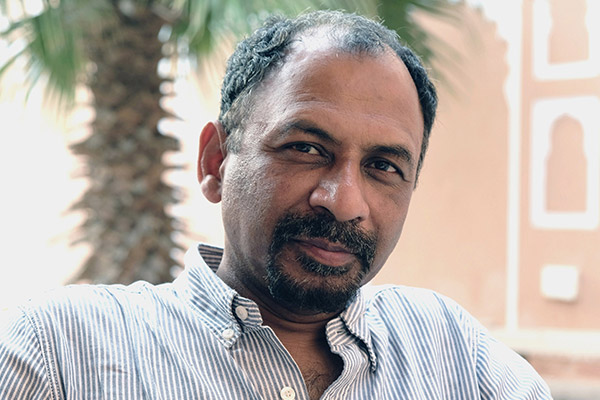
Ravi Agarwal (b. 1958, New Delhi, India) is a photographer, environmentalist, writer and curator. His earlier work, in the documentary mode, encompassed the themes of ‘work’, ‘labour’ and the ‘street’. His practice now also includes performance photography, video/photo installations and public art, and explores questions of urbanization, ecology and society. He has exhibited widely, including at Documenta XI (2002) and the Sharjah Biennial (2013). Ravi Agarwal is also the founder of the Indian environmental NGO, Toxics Link.
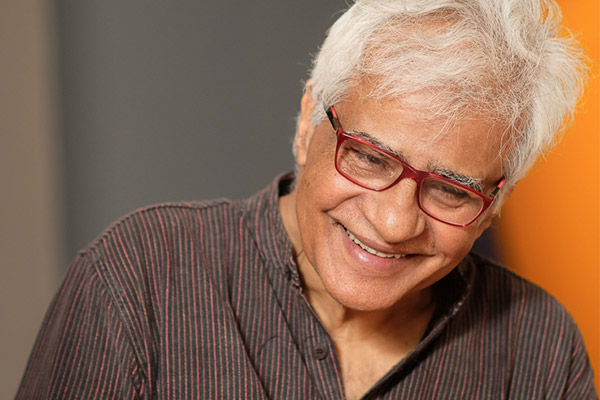
Vivan Sundaram (b. 1943, Shimla, India) studied painting in Baroda and London. Since 1990 he has made sculpture, installation, photography and video. He has exhibited in the Biennales of Sydney, Seville, Taipei, Sharjah, Shanghai, Havana, Johannesburg, Kwangju. His international group exhibitions include Tate Modern, London, 2001; International Center for Photography, New York, 2008; Mori Museum, Tokyo, 2008; Haus der Kunst, Munich, 2006. His photographic work includes The Sher-Gil Archive (1994), Re-take of Amrita (2001–02) and Trash (2008).
The Jury Chair was supported by the Goethe-Institut /Max Mueller Bhavan.
Announcement of Grantee: 22 December 2016
STATEMENT BY FLORIAN EBNER ON BEHALF OF THE JURY MEMBERS
On behalf of my two fellows of the jury, Vivan Sundaram and Ravi Agarwal, let me say some words. In the last three days, we have lived an experience that is becoming rare: a very intense discussion and a profound exchange on the proposed works among the members of a jury. I would like to thank Vivan and Ravi for that. This level of reflection of what photography is and could be today was only possible due to the variety and the vitality of the submitted works.
As all the participating photographers know, there were the two notions of ‘the staged and the constructed image’ as filters and guidelines for the different concepts and projects. These ideas of ‘the staged and the constructed image’ (that have been in fact acknowledged strategies for another use of photography since the 1970s) give us another understanding of the medium.
But you might ask if photography has not been, since its beginning, a constructed image, with the very first studio portraits or Felice Beato’s battlefields in the middle of the nineteenth century. Or, to take another example, Umrao Singh Sher-Gil’s interior scene from 1922 showing his daughter and himself amidst different phonographs and other modern recording devices, a carefully composed and staged photograph.
These notions of the staged and the constructed image should not exclude any photographic or artistic practices – on the contrary, lots of documentary approaches today are based on the idea of staging their protagonists or of constructing a more complex narrative including different kinds of testimonies. In this sense, the Umrao Singh Sher-Gil Grant wants to advance another consciousness of photography, expanding the medium beyond classical photojournalism, understanding photography not only as a mirror of visual reality, but also focusing on the reality of photography itself in a radical, changing visual world.
In fact, an important number of the works submitted for the Umrao Singh Sher-Gil Grant shows all these different faces of contemporary photography, from the appropriation of private photography archives to the ‘bits and pieces’ of networked images from social networks.
The third filter was the ‘project quality’ of the proposed works. There were works that were politically engaging but still needed to develop a formal language adequate to the issue. There were other proposals that were developed constructions but did not chart out a new trajectory for the project. So, if there is a work you like and find it missing on the following short list, it is possibly because we, as the jury, felt that it did not respond to the brief of the USG Grant/Call for Submission.
The Short List
Among the 44 submitted portfolios, the jury selected 5 projects for the short list. We privileged projects where we clearly saw the potential of a future body of work that has to be produced. We would like to acknowledge the following portfolios with an honourable mention:
You Are What You Is by Kapil Das
The series of black and white portraits by the Bangalore-based artist and designer Kapil Das constitutes a subtle meditation on the face, and a playful combination of different kinds of montage and collage techniques. He is superposing different views of a face, not by morphing them digitally but by the simple means of several exposures and different lightings. His pictures mounted on cut-outs of coloured patterns of paper challenge our idea of the face as the genuine place of identity and beauty.
The African Portraits by Mahesh Shantaram
Mahesh Shantaram is a documentary photographer from Bangalore. His body of work, The African Portraits, consists of staged portraits of African people living in the neighbourhoods of that city. Mahesh’s work convinced us in many ways. He photographed members of this community during the night transforming the nocturnal settings into a real stage proudly occupied by his protagonists. Despite the formal quality of his arrangements and the depth of his images, the photographer is still quite close to his protagonists and showed an honest empathy with the people.
Membrane by Sukanya Ghosh
Membrane is the title of a remarkable series of photographic lightboxes, proposed by the Delhi-based artist, Sukanya Ghosh. The individual images are montages of different historical layers combining photographs from a found collection of and by her family. Her enigmatic and beautiful compositions inscribe themselves in the long history of photomontage since the 1920s. ‘The tentative translucence of images’ recalls, according to Sukanya’s quote of Homi Bhabha, ‘the layered form of the palimpsest.’ Therefore the use of lightboxes seems to be the adequate metaphor for this work on memory and loss.
The jury would like to make a very special mention of the following project:
People You May Know by Chandan Gomes
The story, People You May Know, by the young, Delhi-based artist, Chandan Gomes, is built on an archive of conversations and visual exchanges with a stranger on the internet. In opposition to so many recent works dealing in a somewhat trivial way with the digital and networked world, Gomes’ approach represents a very precisely constructed novella on love and on the inextricable fusion of fact and fiction in the time of the Internet. Quoting Chandan Gomes: ‘Through this work, I wish to throw light on how our dependence on the Internet has reshaped our social interactions, sexual habits and our understanding of the self. In the virtual world everyone appropriates, imitates who they want to be, but hide who they really are.’
Finally, the jury has decided to award the 2016 Umrao Singh Sher-Gil Grant for Photography to the project When The Wind Blows by Prajakta Potnis. The metamorphosis of everyday domestic objects, becoming something different and transient, is an essential element throughout the installations and sculptures, drawings and paintings, photographs and videos of Prajakta Potnis. As she has displayed in different exhibitions a subtle and poetic practice reminiscent of a surrealist spirit, the submitted project by this Mumbai-based artist convinced the jury.
For When The Wind Blows, Prajakta Potnis will transform the freezers of different refrigerators (even refrigerators that have to be constructed) into a photographic studio, by staging landscapes and constructing alien places as equivalents and ciphers of our time. Or, to say it in Prajakta’s own words:
“The frost from the freezer simulates a snow-clad deserted landscape or a terrain of an unknown planet. Timothy Morton’s Hyperobjects: Philosophy and Ecology after the End of the World, initiated the site. With the melting of glaciers to the seed vault in Norway, the freezer seemed like an appropriate space to reiterate the dialogue around anthroprocene through the realm of the domestic – the private. I intend to explore the possibilities of shooting within the environment of the freezer, building complex settings that translate into psychological topographies.”
With this radical and, at first view, absurd gesture of choosing a freezer as a studio, Prajakta Potnis creates an atmospheric setting that is significant in a double sense: metaphorically for the frozen image that is photography, politically for the most challenging questions of our time. We are looking forward to the visual universes she will create with the help of the grant.



